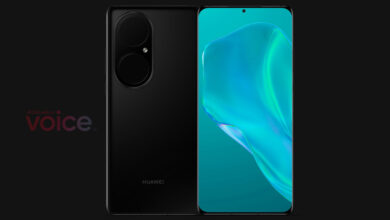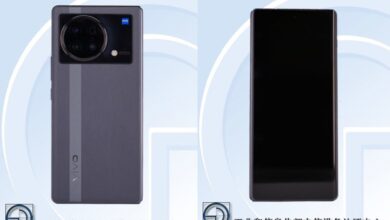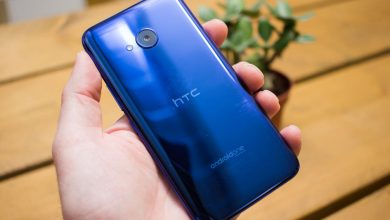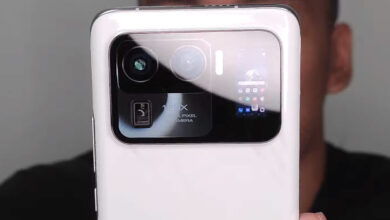What is Bixby? Samsung’s smart assistant explained

[ad_1]
(Pocket-lint) – Samsung’s Android phones come with their own voice assistant called Bixby, in addition to supporting Google Assistant.
Bixby is Samsung’s attempt to take on the likes of Siri, Google Assistant and Amazon Alexa.
While it hasn’t had the success of any of those three assistants, it is still pre-installed on many Samsung devices.
What is Samsung Bixby?
Bixby is a virtual assistant. It made its debut on the Samsung Galaxy S8 in 2017 and is designed to work across a range of Samsung products, incorporated in numerous other devices like Samsung’s Family Hub fridges and TVs.
You can use it to text, get tailored information about the weather, reminders of meetings, news articles, and so on, learn more about what it sees with the camera (like where to buy a couch in the camera view), and complete actions (such as call your Mum for you). Bixby can learn individual voices, so it will personalise answers depending on who asks. Samsung said it “learns, evolves, and adapts” to you.
Bixby appears in a number of different areas, originally getting its own Bixby button on some Samsung Galaxy phones, although this has now been dropped, as it was an unpopular option with users.
There is the sense that Bixby is maintained rather than developed by Samsung. Since launch we’ve seen the removal of Bixby buttons, the non-appearance of the expected Galaxy Home Bixby speaker and some functions removed from Bixby – like the Uber support.
More recently with the launch of the Galaxy S21 family, Samsung appeared to be moving closer to Google, offering Google Discover on the home screen for example, suggesting that it might be winding down some of its services in the future.
How Bixby works
Bixby is designed to let you carry out a full range of interactions, rather than launching an app, for example, or carrying out a single task.
Bixby is contextually aware, meaning that it can recognise the state that the app is in and take the right actions based on your requests, also letting you mix voice or touch.
Bixby should also be able to understand natural language: this means that you don’t need to use set phrases, but you can give incomplete information and Bixby can interpret and take action. Natural language recognition has been key to the rise of Alexa, for example, and is now a key element of modern AI.
The service essentially works in the same way as other AI solutions like Google Assistant or Amazon Alexa in that it listens to your voice, interprets the information, and returns the resulting action.
The contextual awareness means you can get it to take actions without laboriously detailing exactly what to do with what – it already understands where you are so can take the logical next step.
Wake word
For those using the “Hi Bixby” wake word, you’ll can talk to your device using natural language as you might do with Google Assistant. However, Bixby seems prone to launching accidentally, so using the button press method prevents false recognition. This only applies to the voice control side of Bixby. Otherwise, you’ll find things like Bixby Vision integrated into the camera and ready to use.
Many Galaxy devices offer a way of assigning Bixby to a button press. We mentioned that some older devices had a Bixby button – on more recent devices, there’s the option to have Bixby launch either on a double press or press and old of the side/power button. Head into settings > advanced features > side key and you’ll find the options.
What Bixby can do?
Bixby Voice
One of the main aims of Bixby is to deal with increasingly complicated devices. Here are some examples of what Bixby will do:
- Say “show this on my TV” to see your phone screen mirrored to a Samsung TV.
- Say “use this as my wallpaper” to saves the onscreen image as your phone wallpaper.
- Say “take a selfie and share it will Facebook” to force your device to do exactly that.
- Say “remind me to take medicine at 3pm” so that Bixby will save the reminder.
- Say “open Messages” to open the Messages app.
- Say “turn on HDR” to turn on that feature in the Camera app.
You must hit the Bixby button or say the wake work to use these commands, which all make logical sense, fitting with the outlined aims that Samsung originally set out for Bixby. It’s easy to ask it to do things like changing the volume or increasing the brightness of the phone. Generally, when it comes to device control, Bixby is very good, as it is with composing messages for you, or reading incoming messages. etc.
Bixby will also interact with apps like SmartThings, giving you smart home controls via voice. You’ll have to setup everything in SmartThings, but then Bixby will be able to offer a voice route into that app.
Bixby’s home page
When you tap on the Bixby app shortcut, you’ll be taken through to the app’s home page. You can also access this by saying “Hi Bixby” and then tapping on the home icon in the bottom right-hand corner.
This page acts as a good guide to Bixby, showing you the sorts of things that Bixby will do and the things you can see to get information from various apps and services.
Importantly, you can see devices that you have signed into Bixby and you can also view your conversation history with Bixby on those devices.
You can also manage quick commands, which will let you set a simple phrase and a range of actions. For example, you can say “Hi Bixby, I’m driving” and Bixby can turn on Bluetooth, turn off Wi-Fi and play a playlist, for example.
Bixby Routines
Bixby Routines is a framework for If and Then actions. It will allow you to define triggers – like time, place, device state, or some other activity – and then actions – like open an app or change something on your phone.
It’s the sort of thing you could have for a morning routine, controlling smart home devices and so on. It’s designed to work around you phone and slightly confused by the fact that SmartThings has an automation section using very similar visuals that offers smart home automation – and it generally easier to work with.
In truth, Alexa Routines are easier than Bixby Routines, so if you’re in a process of picking a system, Alexa might be a better bet.
Bixby Vision
Bixby Vision offers a range of functions that take advantage of the camera on the phone. Working in a similar way to Google Lens or the Amazon shopping app, you can either ask Bixby what something is or open the camera app and hit the Bixby Vision button.
This is a great feature, but one we’ve used plenty of times before in other apps. Bixby Vision will essentially identify whatever the camera is pointed at, with options presented depending on what it sees, offering to identify an image, place, text or go to shopping options. When the Bixby Vision thinks it can see wine, it offers a wine search function. These then lead into more information, once the device has been identified.
We’ve seen it:
- Identify The Shard in London and suggest local restaurants.
- Recognise a box of chocolates and suggest shopping options.
- Spot a bottle of wine and offer details about it.
- Recognise text, making it easy to copy text from a poster.
The best bit about Bixby Vision is that it’s not dependent on the full Bixby Voice service, with direct access through the camera, so you can use it without having to use the voice assistant at all.
Bixby Home
Originally there was another side to Bixby, Bixby Home. This was part of your phone home screen, living off to the left of your homepage. More recently, Samsung has shifted to offering Google Discover, but on some older devices you might still find Bixby Home in place.
In the UK this was integrated into the Upday news service or Flipboard for those elsewhere. This is filled with cards, like a personal feed or scrolling list of information that Bixby can interact with, whether that be weather, fitness activity, and buttons for controlling IoT gadgets.
Many apps and services could be integrated into Bixby Home, like Twitter, Facebook, Spotify, and your Gallery, so you could access highlights from all these things there.
Bixby Reminders
Bixby can create a reminder for you – but with specific tasks in text or checklist format. You can ask it to remind you of calls and text messages that you want to make later, and media content that you want to revisit later such as photos (up to eight photos in one reminder), video, and web content.
Restaurant recommendations
Restaurant recommendation can be served up by Bixby based on places you’ve visited in the past. It will use existing capsules for this – like Google Maps – which again begs the question of why you’d use Bixby when you could go straight to Google.
Writing by Chris Hall.
[ad_2]
Source link





